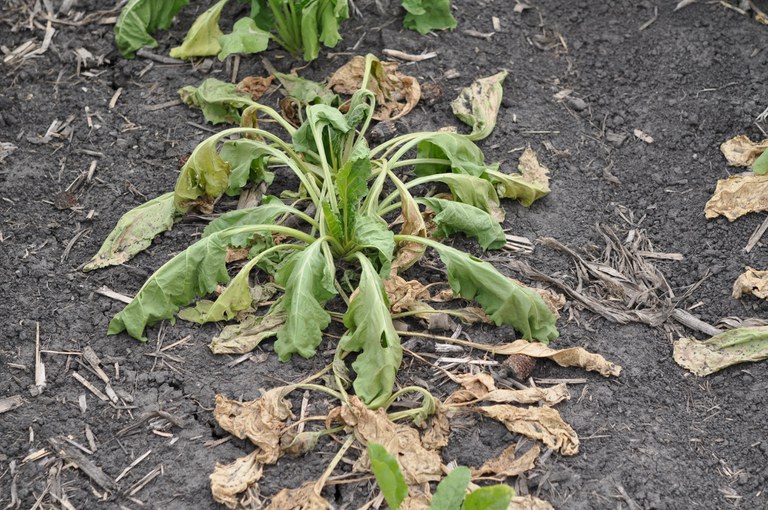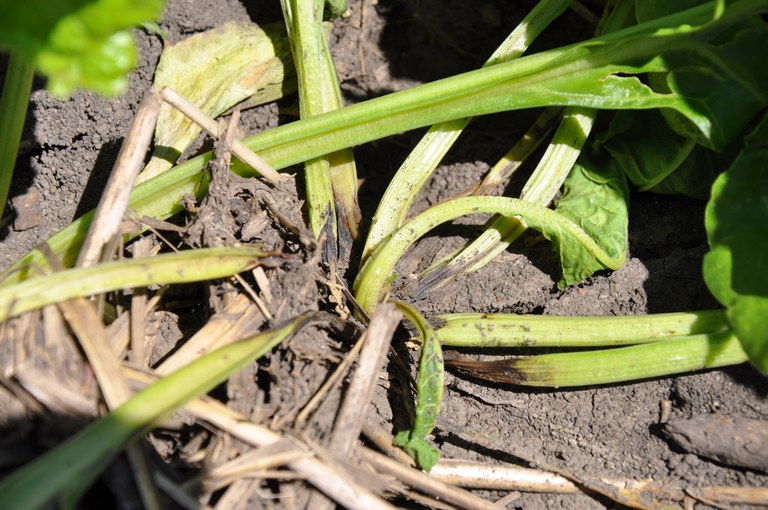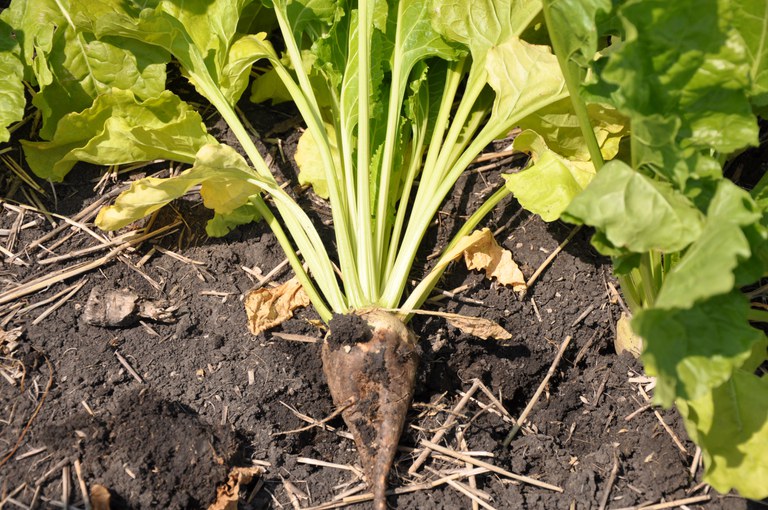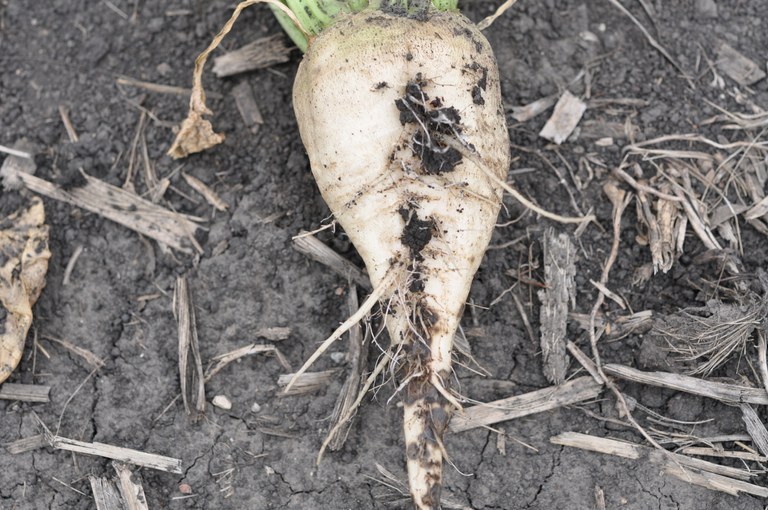Management of Rhizoctonia Root and Crown Rot of Sugar Beets (PP1495, Revised Sept. 2016)
Availability: Web only
The local sugar beet-growing areas have been in a wet cycle during the past 20 years. Fields with high disease severity probably have resulted from a combination of wet conditions and a prevalence of other susceptible host crops in the rotation. For example, nonsusceptible crops such as wheat and barley formerly used in rotation with sugar beets have decreased in acreage and have been replaced with susceptible crops such as soybeans, edible beans and corn.
Rhizoctonia root and crown rot may reduce yield significantly and diseased beets may cause problems in storage piles. Growers at some sugar cooperatives are required to destroy fields with more than a 50 percent incidence of root rot because infected roots cannot be placed in piles for-long term storage.
Causal agent
Rhizoctonia root and crown rot is caused by the fungus Rhizoctonia solani. This fungus is divided into a number of anastomosis groups (AGs) based on vegetative compatibility reactions that occur when hyphae of two similar isolates fuse and genetic material is exchanged.
The main AGs that seriously impact sugar beets in Minnesota and North Dakota are AG 2-2 IV and AG 2-2 IIIB. The pathogen is present in all soils but becomes problematic in fields where the pathogen population is high because of the frequent use of susceptible host crops in the rotation.
Disease symptoms
The most common symptom is wilting of the leaves, starting with the oldest leaves, and is likely a consequence of damage to the vascular system
(Figures 1 and 3). Leaves may or may not become yellow. In some instances, the petioles may develop some blackening where they are attached to the crown (Figure 2).
Crown rot infection probably is initiated when infected soil is thrown into crowns during cultivation, by rain splash of infected soil into the crowns or where the petiole attachment to the crown is covered with infected soil (Figure 2). Root rot infection typically starts at or just below the soil line (Figure 3), and sometimes lower on the tap root (Figure 4).
Root rot symptoms may range from scattered brown to black lesions on the root surface to complete rotting of the root. Initially, the disease may occur in a few patches in a field. If significant inoculum is present, often as a result of continuous planting of susceptible hosts, entire sugar beet fields may be lost to the disease when conditions are favorable for disease development.

Figure 1. Wilting of oldest leaves first and yellowing of plants infected with R. solani. (NDSU photo)

Figure 2. Blackening of petioles and infection at the soil level. (NDSU photo)

Figure 3. Rhizoctonia root rot infected plant with yellow leaves, and showing infection start on the root just below the soil line. (NDSU photo)

Figure 4. Rhizoctonia solani-infected plant with rot symptoms on the lower part of the tap root. (NDSU photo)
Disease management
Rotations with crops such as wheat and barley, which are not hosts of R. solani AG 2-2 IIIB or AG 2-2 IV, will help reduce the inoculum pressure. Because the pathogen is more severe in wet conditions, draining and leveling of fields will help in disease management.
Fields with a history of Rhizoctonia root and crown rot should be planted to a variety with good disease resistance. The fungicides azoxystrobin and prothioconazole with a non-ionic surfactant at 0.125 percent volume per volume (v/v), and a mixture of pyraclostrobin and fluxapyroxad applied in a 7-inch band before infection takes place provide effective disease control.
Fungicides should be applied when the average daily soil temperature at the 4-inch soil depth is about 60 to 62 F or before the canopy covers the rows (four- to 10-leaf stage).
Mention of trade names or commercial products in this article is solely for the purpose of providing specific information and does not imply endorsement.
Revised September 2016

